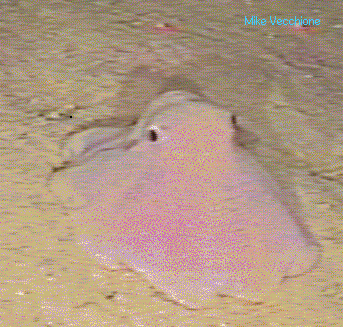

Order Octopoda
Members of the order Octopoda have eight arms and no shell at all, but they
have evolved mechanisms to protect themselves from predators. Some of the
remarkable abilities of octopi include their ability to change their colour,
texture, and apparent size for camouflage; and to expel ink to confuse
predators.
Order Octopoda may be divided into:


-Suborder Cirrata
to
large fins, a deep and sometimes complicated web and a relatively
large, single internal shell"(Voss, 1988)
well-developed
and adult-like in behaviour-Suborder Incirrata

In the vast majority of natural deaths, both males and females
undergo a 2 to 4 week period of deterioration during which feeding is sporadic,
and the skin, arms and internal organs degenerate. In most males, this deterioration
occurs after mating, and in females it occurs after egg laying.
Figure 19: Two octopi doing the "wild thing". The male is on top and is using his modified third
arm, the hectocotylus, to transfer sperm into the females mantle.
H. lunulata, the blue-ringed octopus is found in the Indo-West Pacific and Indian oceans.
 |
 |
 |